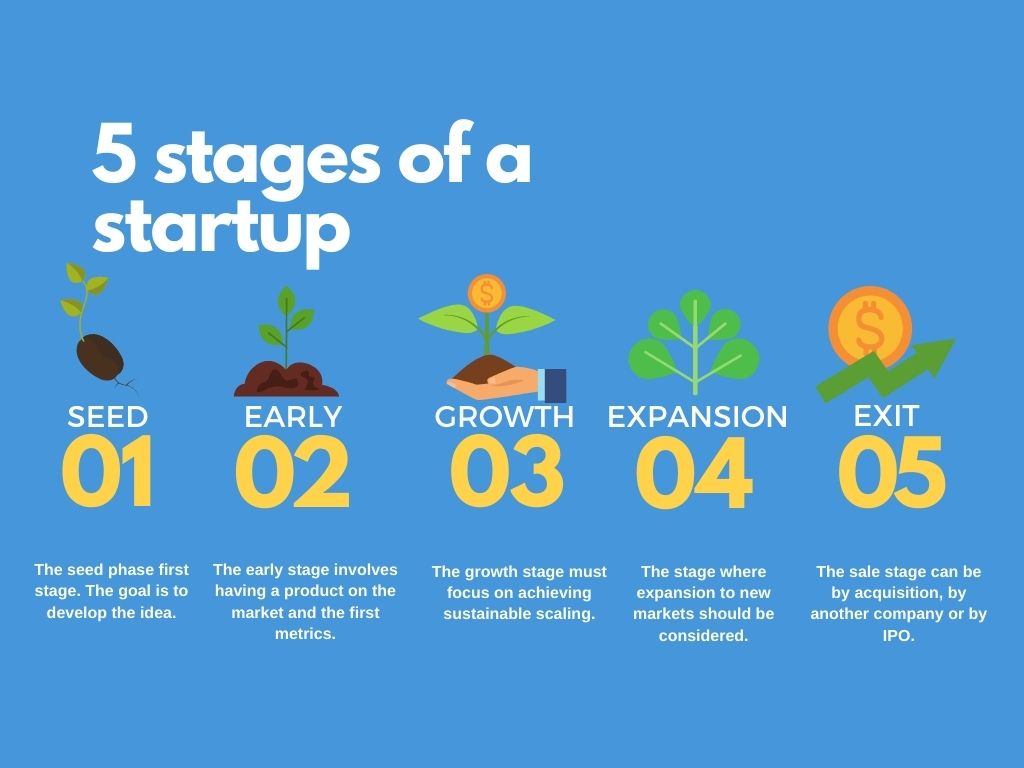Hello!
Growth hacking is partly science and partly an art. There is no specific template to master it as there are so many kinds of businesses and they differ in one way or another. That said, the best you can do as an entrepreneur is getting inspiration and take notes from already established and successful business on the biggest drivers of growth that helped them break out from the norm and make it.
While everyone is looking for a magic bullet in terms of growth, when it comes to growing your startup, most startups tend to try different methods in the beginning until they see which one is working best. This is not always the best approach as it often means your focus is divided and you never really dig deep enough to make a single approach a success.
My biggest advice when it comes to growth hacking for startups is that you need to track and measure every marketing effort closely. If you’re not measuring every dollar made and every dollar spent per each source, you’re not going to be able to make informed decisions on where to spend your marketing dollars and using a common analogy, your startup is like a boat sailing without navigation or a map.
With that in mind here are some tactics that may help you gain traction and skyrocket your startup early on. Some of them will provide short-term results (paid ads), while others (blog) will take far longer, so you need to keep that in mind when evaluating results. There are so many of them all over the internet, but this article lays down the biggest and most easily hackable drivers of growth for early-stage startups regardless of the market.
#1 Creating a Referral Program
A referral program is a strategy or method that aims at promoting products or services to new customers through mainly word of mouth. Referrals more often than not happen spontaneously and naturally and are very important for your startup regardless of the market.
Reasons Why You Should Use a Referral Program
 The influence of a referral program on an early stage startup will never go unnoticed. With the right execution, your startup will grow as you will observe a rise in your customers.
The influence of a referral program on an early stage startup will never go unnoticed. With the right execution, your startup will grow as you will observe a rise in your customers.
Here’s why:
i) People are more likely to acquire a product or service that a colleague, family member or friend vouch for. For a fact, more than 90% of consumers claim that trust referrals from their peers or colleagues and 75% claim that word of mouth is a key influencer in purchasing decisions. That is to say, your customers’ voice holds more power than your brand’s voice. For instance, you cannot force people to talk about your company or give a good review.
ii) A referral program creates a sense of belief to your customers as they feel truly and somewhat invested in your brand. This is very crucial for your brand as you will benefit from that over and over again. People that feel invested in your product or service act as your startup ambassador as they will tell their family or friends about your startup, share your startup online through social media platforms and above all, continue using your product or service for years to come.
There are a number of prominent online companies that have been successful majorly through referral programs. Dropbox, Uber, Airbnb, www.freeagent.com/, and Tesla just to name but a few are remarkable examples of online brands and or companies that have greatly benefited from the word of mouth.
That means any online entrepreneur can create a customer referral program and can eventually hack their growth for their early startups through proper outlaid strategies.
Starting a customer referral program from scratch can hang tough especially for an early stage startup. But how has Dropbox, Uber and co. Done it? How do you convince your customers to consistently submit referrals for your startup without annoying them? And even so, where will you begin especially when you are working with a small budget?
 Follow these steps if you want to create a referral program that will hack your way through the early stage of your startup:
Follow these steps if you want to create a referral program that will hack your way through the early stage of your startup:
i) Define goals
This is the initial and the most important stage as you will have to sit down brainstorm and conceptualize by finding the answer to why you need to get a referral program. Aside from the obvious reason - increasing your traffic, you are going to dig deep in your mind.
Perhaps you not only want to increase your traffic but also you are looking forward to getting your customer loyalty level raised higher than the current situation. It could be that you just want to grow your sales, or want to turn more of your customers into lifetime customers or just maybe all you are looking for is to get more brand advocates.
You will need to define these goals as it helps you measure the success of your program after launch. With that, you will have something to point to and leverage it against your efforts pumped in to determine your program’s effectiveness.
ii) Create the message
Your program must be very understandable and easy to execute. The clarity, straightforwardness, and simplicity of how your program works should be spot on, otherwise, your potential customers will not give your startup a second look.
 Simply outline how the program works, what customers are supposed to do and how they will be able to do it. In other words, make your call to action prominent and clear.
Simply outline how the program works, what customers are supposed to do and how they will be able to do it. In other words, make your call to action prominent and clear.
Airbnb as aforementioned as one of the online companies that boast of the successful program referrals have done a remarkable job in terms of creating the ideal program referral messages. On the company’s landing page, a strong call-to-action has been outlaid and it states, what their customers should do and why they should do it.
iii) Choose an Incentive
Incentivizing the referrer as well as the referree is essential is you want to grow your business with successful referral marketing strategies. Asking your customers to refer their friends, family or colleagues may sound easy but it comes at a little price if you want to get that done effectively. You will have to offer some kind of incentive with the aim of having them get the word-of-mouth job done. Incentives can be in different forms, you may offer them monetary incentives like discounts on your product or services, or offer them a free product.
For instance, Dropbox, a cloud storage/backup service, is one of the prominent companies with a successful referral program, and they offer up to 16GB free space as an incentive in exchange for referring a friend. 16GB free space on a cloud is quite big enough especially people who need cloud backups/storages, but to Dropbox, one more new client for 16GB free storage is a good exchange.
iv) Create a Landing Page
Just as much as you will need a successful referral program for your early startup, it is the same way you will need a landing page for your referral program. That is how important it is. A landing page is a centralized location, usually a website where you put all your information about the referral program.
 That said, make sure you the page is easily accessible from your home page and you can choose to include it within your main navigation. You can then optimize the page using the suitable SEO practices to ensure your page is easily found when they search for it in the search engine.
That said, make sure you the page is easily accessible from your home page and you can choose to include it within your main navigation. You can then optimize the page using the suitable SEO practices to ensure your page is easily found when they search for it in the search engine.
It is on this page that you can include your message and call-to-action not forgetting the details on how one can submit their referral. To take this step a notch higher, you may decide to include a form on the landing page to make the process of submitting a referral easy.
v) Focus on analytics
This is a very critical step and should be done before launching your referral program otherwise you might lose the track of your progress. Using various known analytics tools suitable for you and your program, for example, Google Analytics, track the success of your efforts.
You will need to know how many people are getting to your landing page, how they get there, where they come from, and what they clicked to lead them there. This is important as it will give you an insight into the number and the source of your potential customers.
Once you know that, you will know the direction to boost your efforts for increased traffic for your early startup.
vi) Spread the word
“The actual terms and conditions of the program are easy to develop, but the marketing of the program is where businesses come up short--and a weak rollout almost always leads to an underperforming program”
 These are words from Samuel Edwards, a digital marketing strategist and as he put it, one of the main reasons why referral programs underperform is failing to focus on the rollout.
These are words from Samuel Edwards, a digital marketing strategist and as he put it, one of the main reasons why referral programs underperform is failing to focus on the rollout.
Therefore, you will have to pull all strings together to ensure that people on the digital market know about your program. You can create a schedule that will promote your program across all social media channels, blogs, and emails.
Use as many platforms as you can as there is no limit to that.
vii) Train your employees
Let not the term ‘employees’ confuse you here, your employees are your product advocates in this context. If you inform them and train them properly, they will turn out as your gems. In fact, they will be more effective than the obvious social media marketing platforms.
This is because they, the advocates, represent you in the marketing field. If you educate them the important details of your program well enough, they will, in turn, reciprocate it and talk about your product and explain it to others as you would have done.
Apart from training, you can as well encourage your advocates to talk about your program with their family, friends, and most importantly, share it on social media. It is a “tell them - to tell them” kind of strategy. This will add more value to your startup and at the same time widen your reach.
#2 Start a blog
The number of sites online on the internet is roughly 1.9 billion and every second, websites are being developed. That is to say, new startups usually face the challenges of being found by the target audience) and trying to stand out as well. Creating high-quality content will also help you to build a community and it will allow you to convert 1-time shoppers into loyal customers.
Even when you get someone visiting your site, you should have quite an outstanding content enticing enough to lure them back for more. Blogging is one of the ways you can achieve this. Having a blog for your startup is very important. Here’s why:
 A blog for your startup will:
A blog for your startup will:
a) Educate your prospects
Education will remain a powerful tool, not only in real life but also in online entrepreneurship. Since your blog is essentially a platform where you publish your startup related content, it allows you to talk to your potential customer and educate them about your product or service. This is more important than merely selling your product.
You will have to think about your customer’s situation, anticipate the questions about your product or service they might have and write a post that solves all that.
b) Improve your site SEO rankings
If you publish new, relevant and viral content on a regular basis, it will drive your search engine optimization. Additionally, your blog, through well-researched keywords, backlinks and internal links will greatly improve your SEO rankings.
 It is even better when your blog gets syndicated to popular posts as it raises your scores and visibility. This means your site would be among the top sites that pop up on search engines when someone searches the related keyword to your content on your blog. In turn, you will get more traffic.
It is even better when your blog gets syndicated to popular posts as it raises your scores and visibility. This means your site would be among the top sites that pop up on search engines when someone searches the related keyword to your content on your blog. In turn, you will get more traffic.
There are a number of SEO tools you can use to improve your SEO rankings.
c) Help convert traffic into leads
If you have your traffic coming to your product/service website via your blog, that's an opportunity to turn them into leads. Every new blog post you write is like an indexed page and will generate new leads by adding a call-to-action button at the end of your blog post. A call-to-action will prompt your traffic/visitors to take a certain action like submitting their email or downloading your ebook among others.
d) Be the first step to full utilization of social media marketing platforms
 If you want your blog to go viral, you will have to share and promote it through social media. That means you will need to learn how to use Facebook, Linkedin, Twitter, and Instagram, among others.
If you want your blog to go viral, you will have to share and promote it through social media. That means you will need to learn how to use Facebook, Linkedin, Twitter, and Instagram, among others.
Once you are fully-equipped with social media marketing strategies, the process of blogging and later on promoting your content will be very easy. The whole process will leave your website with a traffic of customers who want to acquire your product.
e) Attract funding/monetization sources
There are a number of investors across the web scanning through blogs for new online business ideas and entrepreneurs. If your startup has a potential million dollar success, you will receive offers and it is only through your blog where investors can read and understand and try to figure out its potential.
There are other ways you can monetize your blog though.
You can make extra money through:
• Sponsorships and advertising - Sponsors and adverts can generate huge chunks of money. However, your blog needs to have quite a large audience and traffic/visitors before you get a sponsor or do adverts.
• Creating an online course - Online courses are very popular and you can make quite a good chunk of money if you do it well. This can be done on your blog as well. However, it does not have to be a paid course. You could have a free course, educating people on how to best use your product or service.
Having discussed the benefits of a blog for your startup, we can also quickly and briefly discuss the strategies and tips creating an outstanding blog that will drive the growth of your early startup.
a. Design, launch and set up your blog
It is easy these days to create a website for your blogging purposes. Using WordPress, themes, and plugins that are reliable and available at your disposal you will have a website working without having to write a single line of code. It is that easy.
 However, you will need to choose the best themes for your website. A good theme gives a good impression to the readers of your blog.
However, you will need to choose the best themes for your website. A good theme gives a good impression to the readers of your blog.
You can then check the best website hosts and again, choose the best for your website. All you need to do is invest in a host who provides scalable packages because, with time, your website will grow, draw more traffic to the tipping point. That means, if your website host is not good enough, then you will have to switch to a better one, something you would not want to do.
b) Build your content strategy
You should aim at delivering not only top-notch content, but also content that best serves the needs of your customers. Together with proper keyword research - usually done by known keyword research tools, you will have no choice but excel at building the perfect content for your blog.
How to build flawless content for your blog?
i) Define goals - Document all the goals of your blog first. For an early startup your main goal first, should be educating people about your product or service. Then you can also try to put yourself in your customers' position and answering the questions they are more likely to ask. These are the goals that once laid down will help you come up with content that is suitable for your target audience’s consumption.
ii) Know your target audience and identify their pain points - Find out the problems that your audience is experiencing with the help of your staff(if you have any like customer service). That will help you create content that could be an answer to their problems.
iii) Create a list of prospective topics based on your startup - You are going to brainstorm at this stage and come up with content relating to your startup. If you are not creative enough, then you will have to check your prominent competitors and find out what they write about their startup.
vi) Conduct a keyword research - Once you have a list of topics to write, then the rest of the process is quite easy. You will have to quickly dive into keyword research and find out the most targeted keywords around the topics. With the help of keyword research tools, like Moz Keyword Explorer, Keywordtool.io and Ubersuggest your hunt for appropriate keywords will be smooth and brief.
v) Develop an editorial calendar - create an editorial calendar based on the findings of your keyword research. The calendar will help you organize and match your found keywords with targets for the content to be created.
vi) Determine the modes to measure your success - This stage is very crucial and many people tend to overlook it. Measuring your success will help you find out if you are doing the content creation strategy as required. It will help you determine the impact of your keywords as well. From Google Analytics to Buffer.com and to www.cyfe.com/, there are a number of these tools that you will use to check your content and keyword performances.
vii) Create your content - Now that you know and have everything that entails building flawless content for your blog, then it's time to let the games begin.
c) Use the Skyscraper strategy to market your content
 There's no official definition of viral marketing but according to Brian Dean, “Viral marketing is an approach designed to get others to share your product for you.”
There's no official definition of viral marketing but according to Brian Dean, “Viral marketing is an approach designed to get others to share your product for you.”
Basically, it is all about getting your product or service gain popularity by word of mouth. You can decide to use the skyscraper technique to make your blog post go viral.
It is done in 3 steps:
i) Find content that went viral in your niche
The ultimate secret to publishing content that people will fall in love with and want to share is basing it on something that worked before.
It sounds easy to accomplish but lots of people fail because they publish content that they think will do well. Sometimes they do, sometimes they don’t. In order to avoid these pitfalls, it is paramount that your content is based on a successful framework.
There are a variety of tools that can help you with analyzing viral content across multiple channels but we have found Buzzsumo.com to be the most reliable. There is more to Buzzsumo than you can think of but in general, the tool helps in analyzing content, questions, trending content and backlinks.
ii) Improve On The Content That You Find
 “Thou shall not publish someone else’s content” This is the first commandment in the realm of blogging and there are consequences to that act. Therefore, when you find the content in your niche that went viral, you just do not re-publish it.
“Thou shall not publish someone else’s content” This is the first commandment in the realm of blogging and there are consequences to that act. Therefore, when you find the content in your niche that went viral, you just do not re-publish it.
You will have to think in the perspective of the topic written, get the idea and write something closely related to, but putting in mind the purpose of your startup too.
iii) Promote Your Content
There are over 2 million blog posts that are published daily There are numerous ways to promote your blog content.
- In other words, chances are no one is going to see your content until you promote it. Promoting your content means using all strategies available to make sure your content stretches out to your target audience.
- Share your blog posts on popular social media platforms like Twitter, Facebook, and Instagram. This will help you gain more visitors for your blog and site. Don't only use the traditional approach to distributing and promoting your content. You can also promote your content with social media strategies that have been neglected by your competitors.
 There are numerous ways to promote your blog content:
There are numerous ways to promote your blog content:
• Post your blog at a place where your target audience hangs out most. Such places include; Reddit, Quora, where you can choose a category of your topic and share your blog post.
• Use advertisement engines like Mix (www.mix.com/) (Formerly called StumbleUpon). The platform boasts of 25 million users and gains 1 million every new month. This means that even if the users on Mix/StumbleUpon are not interested in your product, there are many chances that your blog posts can go viral.
In summary, there is more to blogging especially viral marketing and you can learn more from the story of a man who built $100m viral content website from nothing.
#3 Social Outreach for Influencers
This strategy aims at turning social media influencers into your product and brand ambassadors. The influencers will create shoutouts and reviews about your product or service and share it with their audiences and this will drive traffic to your website.
The strategy, commonly done on YouTube and Instagram can be applied to various social media platforms depending on whether your business is B2B or B2C.
 Here we will use YouTube as an example to show how you can do it but the logic in the strategy can be employed on other social media networks the same way:
Here we will use YouTube as an example to show how you can do it but the logic in the strategy can be employed on other social media networks the same way:
I. Using the search options on Youtube, you can find videos of reviews of products that are similar to yours or at least targeted to the same audience or customers. The YouTube channels that will see on the first page as a result of your search are the most popular on YouTube and they are or can be the influencers we are talking about.
II. You can then have your VA create a spreadsheet of the channels noting every detail you may need to know about them.
III. You can then have your VA contact these channels and send them 1 or two follow-ups.
IV. Your VA can then register the progression on the spreadsheet and try to track what has been sent and to who. It is advisable to use the CRM if you are well versed with it.
V. If you do this right, chances are that at least 1 in 4 of the influencers will respond to you. And here is where you come in and negotiate a way through.
Influencer marketing can be a great way to generate buzz for your startup before, during and after launch. You will be interacting with different influencers and they will ask for different things depending on what your business sells. Some will accept a free copy of your product, some will ask for money, others will want a revenue share from your sales in exchange for a review and or shoutout.
The bottom line here is, the more the influencers who are willing to get in a deal with you, the more chances of skyrocketing your startup growth.
#4 Cold Email outreach
How to effectively gather an email list and reach out
Cold emails as well as cold calls are great mediums to reach out to your audience. Cold email outreach strategy is known to work well for most b2b companies but it is a little bit unpopular to many people as it’s often considered spam. While it’s mostly adequate for B2B startups, if you have a B2C company you can also use the email outreach just like the social outreach strategy. You can contact influencers that run high traffic website and blogs that fall within your products niche and try to get them to review your service or product.
Most people running startups tend to fall into the trap of buying email lists but it's advisable if you can find a way to scrape your own emails using different methods putting in mind you are just but a starter.
To get this strategy working, you will need to go through various steps.
 The first step is, naturally gather an email list of your target audience:
The first step is, naturally gather an email list of your target audience:
• Come up with a list of possible markets to target
• Get a VA from Upwork to compile a list of businesses and their domains using Business listings or Google.
• Connect with the key staff in the companies that you are targeting using Linkedin. People often have emails available on Linkedin
• Use a lead finder service such as Outreach.com or Growbots.com to pull emails associated with the domains you collected.
• If you find it hard finding emails, but have a valid list of domains of your target audience, you can opt to use applications like hunter.io or snov.io that will provide you with real emails of people that work for that particular business.
You can then sign up to an outbound email delivery services like Mailshake or Woodpecker and create an initial mail and try following up the sequence of at least 3 follow-ups telling them more about your service and luring them in.
#5 Paid Ads
Buying ads will is another way you can skyrocket your startup an early stage and it's easy to use this strategy once you understand the principles outlined below.
The first step is to figure out how much you can afford to pay per click to bring a customer to your website if you want to run a successful ad campaign that is if you are sure you that you are targeting the right audience.
To figure that out, you must calculate your EPC. EPC stands for Websites earning per click and it represents the amount of revenue you are getting on an average click that reaches your website. Another point to note here is that the EPC is calculated from your profit - not income, divided by the number of visitors on your website within a specific time frame.
For instance, if in the last 3 months you had 20,000 visitors and they resulted to $10,000 in profits, you will divide 10,000 by 20,000 to get your website’s EPC which in this case is $0.50.
This number clearly shows that every visitor on your website is worth 50 cents to you. Once you have such a figure in your mind, you can now find any traffic source that allows you to target your audience by paying $0.50 per click.
Now, if you find a source of traffic, let us say Facebook ads that allows you to pay 0.25 per click, then your EPC will be doubled as you will be paying 25 cents per click and getting 50 cents for each visitor on your website.
By that, you have a perpetual money-making machine that will not stop making money soon as long as you keep feeding it with the pay per click fee and wait for your money to be doubled. That sounds pretty awesome, doesn't it?
Key points to note:
 After figuring out your EPC, you are only left with finding out the advertising networks and platforms where you can get targeted clicks that are less than your EPC. If you are lucky enough to get good pay per click offers then sit back, relax and watch your website make lots of profits for you.
After figuring out your EPC, you are only left with finding out the advertising networks and platforms where you can get targeted clicks that are less than your EPC. If you are lucky enough to get good pay per click offers then sit back, relax and watch your website make lots of profits for you.
Find an extensive list of ad networks and remember that traffic varies on different networks and platforms. All you have to do is only use ad networks and platforms where you can find your target audience to hack the growth of your early-stage startup without having to worry about the market of your product.
Also read:
- Knowing the Future of Startups in 2025
- Top 7 Prominent Leadership Trends for Companies in 2025
- Newest Innovations in Green Technology
Final Thoughts on Growth Marketing Strategies for Early-Stage Startups
The road to a successful startup will not be as smooth as many entrepreneurs initially think is. Most businesses fail especially at startup because, with the little experience in the field of online business, they are easily convinced that they can buy their way in and grow their early startup.
That's never the case. If you have to buy yourself in, then there is only one way: follow the hackable drivers of your startup’s above. Apart from being the biggest, they are easily hackable regardless of the market.
Thank you!
Subscribe to our newsletter! Join us on social networks!
See you!






